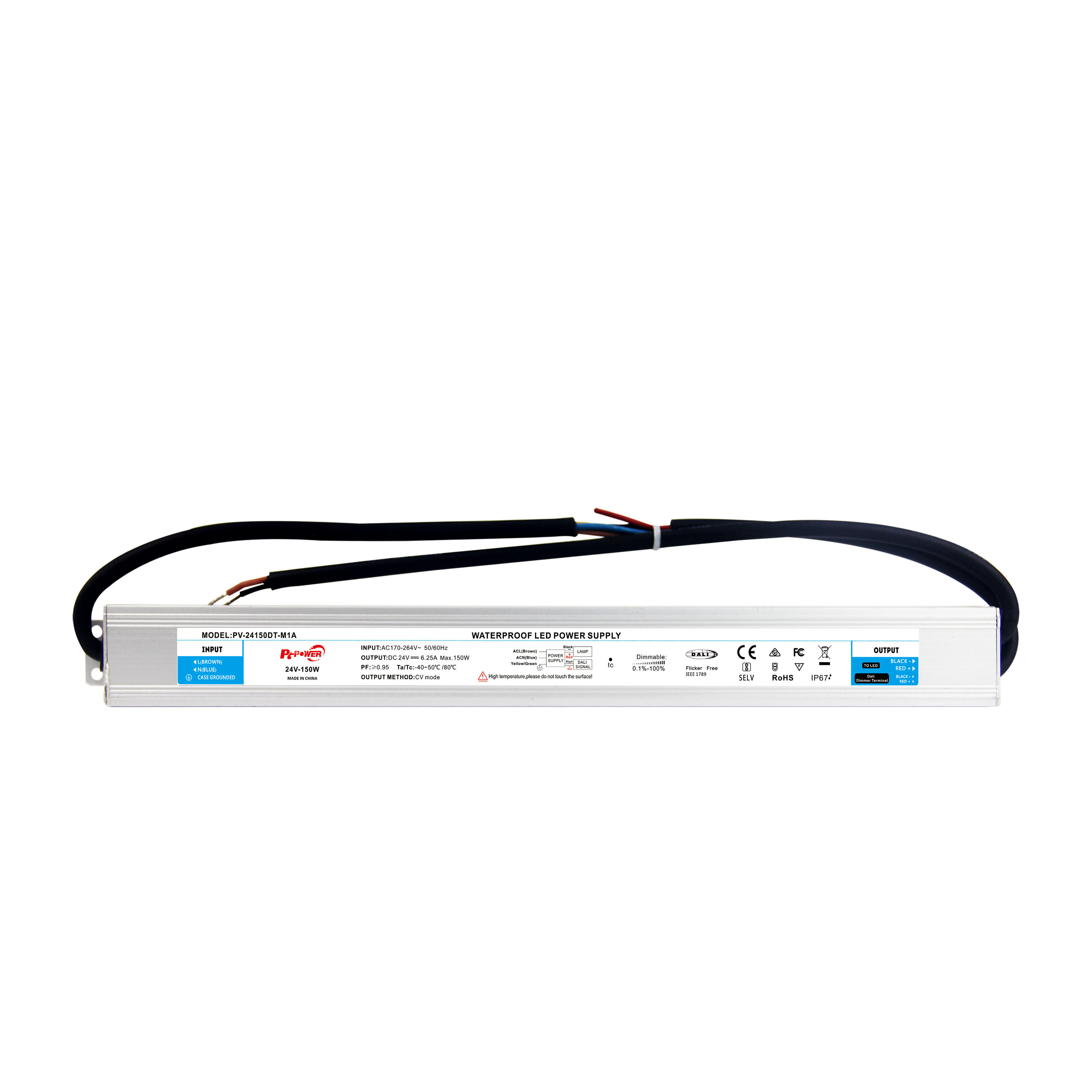How to Test the Performance of Your Constant Voltage (CV) LED Power Supply
2025-06-29

How to Test the Performance of Your Constant Voltage (CV) LED Power Supply
Table of Contents
- 1. Introduction to CV LED Power Supplies
- 2. Why Testing Your CV LED Power Supply is Crucial
- 3. Key Performance Indicators for CV LED Power Supplies
- 4. Reliable Testing Methods for CV LED Power Supplies
- 5. Common Issues Faced During Testing
- 6. Troubleshooting Tips for Your CV LED Power Supply
- 7. Conclusion
- 8. Frequently Asked Questions (FAQs)
1. Introduction to CV LED Power Supplies
Constant Voltage (CV) LED power supplies are essential components in modern lighting systems. They provide a consistent voltage to LED fixtures, ensuring stable performance and longevity. Understanding how to test the performance of these power supplies is crucial for electrical professionals aiming to maintain high standards in their work. This article will guide you through the process of testing CV LED power supplies effectively.
2. Why Testing Your CV LED Power Supply is Crucial
Testing your CV LED power supply is vital for several reasons:
- **Performance Assurance**: Regular testing helps ensure that the power supply operates within its specified parameters, providing the necessary voltage to LED units.
- **Safety**: A malfunctioning power supply can lead to overheating or even fire hazards. Testing helps identify any potential issues before they escalate.
- **Cost-Efficiency**: Identifying problems early can prevent costly repairs or replacements down the line, saving you time and resources.
- **Longevity of Equipment**: Maintaining and testing the power supply regularly extends its lifespan and enhances the overall reliability of your LED lighting systems.
3. Key Performance Indicators for CV LED Power Supplies
When assessing the performance of a CV LED power supply, focus on the following key performance indicators (KPIs):
- **Output Voltage**: Verify that the output voltage remains stable and within the specified range.
- **Output Current**: Measure the output current to ensure it matches the designed specifications.
- **Efficiency**: Evaluate the efficiency of the power supply, which indicates how well it converts input power to output power.
- **Ripple Voltage**: Check the ripple voltage, which should be minimal to prevent flickering in LED lights.
- **Operating Temperature**: Monitor the temperature for overheating, which can be a sign of malfunction or inefficiency.
4. Reliable Testing Methods for CV LED Power Supplies
Testing your CV LED power supply involves several reliable methods, each designed to assess different performance aspects.
4.1 Visual Inspection
Begin with a thorough visual inspection. Check for any physical damage, loose connections, or signs of overheating, such as discoloration or burnt components. Ensure that all wiring is intact and correctly connected. This step is crucial before proceeding with more advanced tests.
4.2 Multimeter Testing
Using a multimeter is one of the most effective ways to test the output voltage and current of your CV LED power supply. Follow these steps:
1. **Set Up the Multimeter**: Configure your multimeter to measure DC voltage.
2. **Connect the Probes**: Attach the positive probe to the output positive terminal of the power supply and the negative probe to the output negative terminal.
3. **Take Measurements**: Read the output voltage on the multimeter display. Ensure it falls within the specified range for your power supply.
For output current testing, switch the multimeter to the appropriate setting, connect it in series with the load, and take the measurement accordingly.
4.3 Load Testing
Load testing assesses the power supply's performance under actual operating conditions.
1. **Connect a Load**: Attach a resistive load that matches the power supply's rated output.
2. **Monitor Performance**: Use the multimeter to continuously monitor the output voltage and current while under load.
3. **Evaluate Stability**: Ensure that both voltage and current remain stable throughout the testing period.
This method helps identify how well the power supply performs under typical operating conditions.
4.4 Thermal Testing
Thermal testing is essential to ensure that the power supply operates within a safe temperature range.
1. **Use a Thermal Camera or Thermometer**: Measure the temperature of the power supply during operation.
2. **Check Specifications**: Compare the recorded temperature against the manufacturer’s specifications.
3. **Identify Overheating**: If the temperature exceeds safe limits, investigate potential causes such as insufficient ventilation or overloading.
Implementing thermal testing can significantly enhance safety and reliability.
5. Common Issues Faced During Testing
While testing CV LED power supplies, you may encounter several common issues:
- **Inconsistent Output Voltage**: This can indicate a faulty power supply or wiring issues.
- **High Ripple Voltage**: Excessive ripple can cause flickering in LEDs, suggesting the need for additional filtering.
- **Overheating Components**: Identifying overheating components is crucial for preventing failures.
- **Current Spikes**: Sudden spikes in current can signify an underlying problem with the power supply or connected load.
Recognizing these issues early allows for timely intervention and resolution.
6. Troubleshooting Tips for Your CV LED Power Supply
If you encounter issues while testing, consider the following troubleshooting tips:
- **Check Connections**: Ensure all connections are secure and correctly wired.
- **Test with Different Loads**: If issues persist, test the power supply with various loads to rule out load-related problems.
- **Review Specifications**: Verify that the power supply matches the requirements of your LEDs, including voltage and current specifications.
- **Consult Manufacturer Guidelines**: Refer to the manufacturer’s manual for troubleshooting tips specific to your model.
Implementing these tips can help resolve many common issues efficiently.
7. Conclusion
Testing the performance of your Constant Voltage LED power supply is essential for ensuring optimal functionality and safety. By following the outlined methods and guidelines, you can effectively assess the performance of your power supply, identify potential issues, and implement solutions to enhance reliability. Remember, regular testing not only saves costs in the long run but also extends the lifespan of your LED systems, contributing to a sustainable and efficient lighting solution.
8. Frequently Asked Questions (FAQs)
What is a CV LED Power Supply?
A Constant Voltage LED power supply provides a stable output voltage to LED fixtures, ensuring consistent performance and enhancing the lifespan of the LEDs.
How often should I test my CV LED power supply?
It is recommended to test your CV LED power supply at least once every six months or before major installations to ensure optimal performance.
What tools do I need for testing?
Basic tools include a multimeter, thermal camera or thermometer, and a suitable load for load testing.
Can I perform tests on a powered CV LED power supply?
Yes, but ensure you follow safety precautions and use appropriate tools to avoid electric shock or damage.
What should I do if my CV LED power supply is overheating?
Check for proper ventilation, ensure the load is not exceeding the rated capacity, and inspect for any damaged components. If the issue persists, consider replacing the power supply.
By implementing these testing strategies, you can ensure that your CV LED power supply operates efficiently and safely, ultimately enhancing the performance of your LED lighting systems.
Previous:







